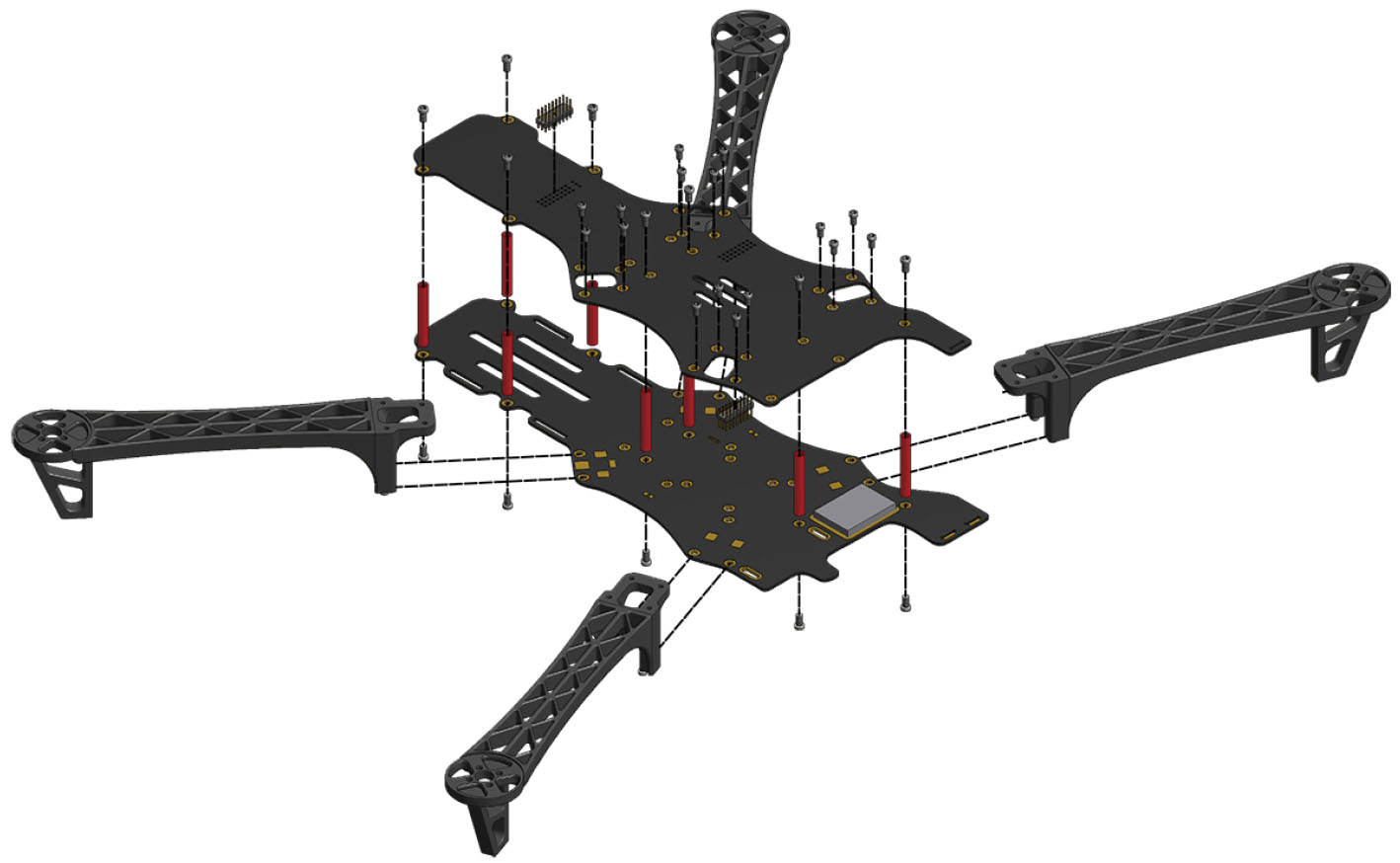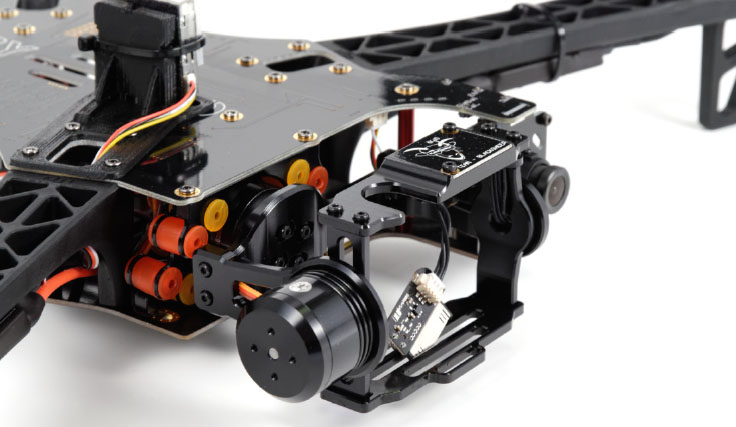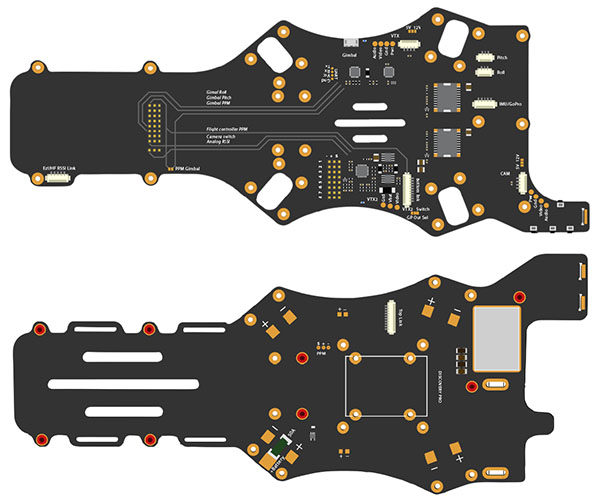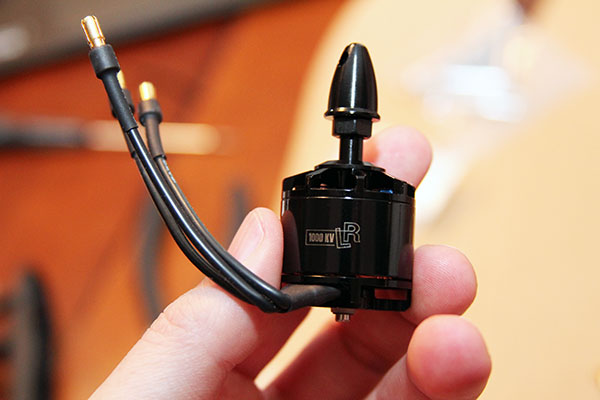Team BlackSheep Discovery Pro: Building A $3000 Quadcopter
Is it any surprise that PC enthusiasts also dabble in other technology-driven hobbies? Our editorial team recently purchased a high-end quadcopter to gauge the accessibility of first-person-view flight. Follow along as we build and critique the process.
TBS’ Discovery Pro Gimbal Frame
Consider this the platform on which your multi-rotor is built. At its simplest, TBS’ Discovery Pro consists of a top and bottom plate with a number of bundled and integrated subsystems, including its own CORE on-screen display module, a licensed controller for the brushless gimbal, and a camera switcher.
Of course, TBS’ aluminum gimbal frame is a centerpiece of the package, allowing you to strap a GoPro onto the quad and film high-def content. Enabling good-quality footage requires vibration isolation, which TBS addresses through a grommet set. There’s also a bundled GoPro output board to interface with the camera, two direct-drive motors for controlling the GoPro on horizontal and vertical axes and Team BlackSheep’s inertial measurement unit. All of the cables, screws, standoffs and bearings you need to assemble those components are included.
You can start with this basic package for about $600 bucks and add to it using hardware from other vendors. Or, remain on TBS’ site and fill in the blanks through a number of customization options. The Discovery Pro Gimbal Frame leaves you in need of frame arms, to which motors and props must be attached, four speed controllers to drive those motors, a flight control computer, a battery, transmit/receive hardware for flight input and transmit/receive hardware for your first-person view (plus the GoPro, if you plan on filming it all).
Yes, that’s a lot of “leftover” equipment to purchase, and yes, it adds up quickly. But TBS expounds on its baseline offering with a few different packages that at least take guesswork out of the equation. In addition to Team BlackSheep’s entry-level Discovery and Endurance Discovery Pro, you can buy the Discovery Pro as a Starter Set or Long Range Set. Don’t know the difference? Think back to Clym’s introductory story (or pull from your knowledge of Wi-Fi, even)—lower frequencies penetrate obstacles more effectively. So, the Starter Set includes a 5.8GHz video link and 2.4GHz remote control, while the Long Range kit features 2.4GHz video and 433MHz EzUHF remote control. I wanted to spread my wings and really fly, so I picked up the latter configuration.
Beyond the $600 base package, stepping up to the Long Range Set gets you four Flame Wheel F450 arms, DJI’s Naza Lite Flight Control + GPS, four 900kV motors, a quartet of TBS Bulletproof speed controllers, Graupner propellers, FrSky’s Taranis X9D remote control, an EzUHF transmitter module, TBS’ own 4S 3.3A LiPo battery, a charger, TBS’ 59 FPV camera, Fat Shark Dominator video glasses, a Lawmate receiver, TBS' own Unify 2.4GHz video transmitter, a TBS Groundstation LiPo 3S 5Ah battery and a Flame Wheel VTx mount, along with the little bits you’d find yourself missing otherwise like servo extensions, Velcro straps and connectors. Again, that’s a long list of parts, and there’s something to be said for a group of enthusiasts hand-picking them.
Of course, that doesn’t mean everything in the Long Range Set is top-of-the-line. Even after committing to a $2300 kit, TBS gives you a long list of options worth considering. Upgrade the Naza controller (I did), step up to the 69 FPV camera (I did), add another battery to extend your afternoon of flying (I did), upgrade to a bigger battery, trading agility for range (again, I did), have TBS tune components, upgrade to more powerful motors, swap in a longer-range antenna. Over and over, I did these things until my price tag crested $3000. The only option I deliberately avoided: have TBS build and set up the Discovery Pro for me at a cost of $350. That much I wanted to share with you today, regardless of how it turned out.
Get Tom's Hardware's best news and in-depth reviews, straight to your inbox.
Current page: TBS’ Discovery Pro Gimbal Frame
Prev Page TBS Discovery Pro: Building And Flying A Quadcopter Next Page The Build: Are We Ready For This?-
blackmagnum Sunbathers beware! On another note: 3k dollars would build an awesome gaming machine, but getting some fresh air is all good.Reply -
Shankovich A company in Toronto called DreamQii made one that's around $1000 for the kit and is modular. A much better deal IMO, and it comes with a sturdier gimbal. Can you guys review that one? Kinda want one but not so sure about the whole thing.Reply -
Bondfc11 The radio in the photos is a dead match for the JR radio I use for flying my helicopter.Reply -
g-unit1111 Pretty sweet but if I had $3,000 to spend money on something, this would be like last on my list. :lol:Reply -
qlum I have looked at quad copters quite often but every time I look I come to the same conclusion: To expensive for something I will get bored of pretty soon anyway.Reply
Anyway the last time I was nervous about something I did was when I had to solder a serial connection on a bricked router. It was a first for me but all went far far smoother then I ever expected. -
d_kuhn Soo... while this looks like a very cool drone, if you're looking at your first buy you might want to look a bit more modest... like the DJI Phantom 2 Vision+... $1300 buys you a nice quadcopter with a stabilized camera. That's a lot less $$$ to lose when you auger in on your maiden flight.Reply -
desert_beagle great article.. just expecting the delivery of my TBS Disco + Taranis today.. yes, it's expensive, but it's a lot of fun.. )Reply -
quadcopterhq Really great overview of what it is like to build your own custom quadcopter, one of the most coherent and in-depth ones I've seen so far. To be honest, all the work makes me want to just recommend buying an off-the-shelf ready-to-fly option like the DJI Phantom! Of course, this model is much more capable and for any pro the customization is necessary (and enjoyable potentially too) to be able to get the video results required.Reply
What kind of flying time does the rig have? And could you attach a larger, heavier camera if you swap in a different gimbal or are you limited to the GoPro line?




